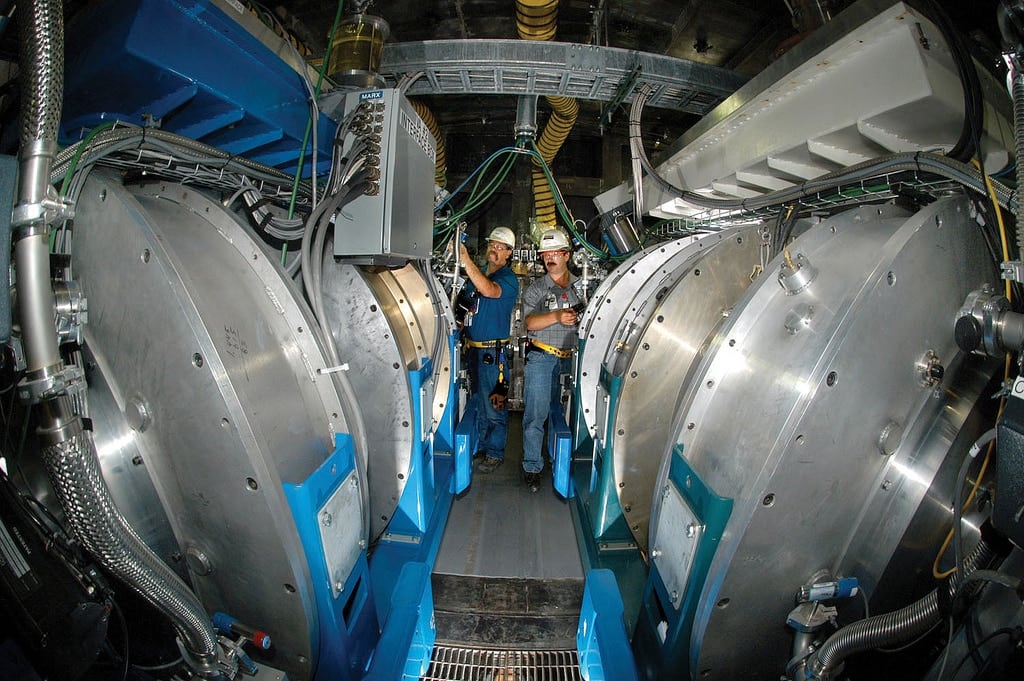WASHINGTON — As the Trump administration pushes for the development of new nuclear options, the outgoing head of America’s nuclear warhead agency is warning that his agency is stretched as far as it can go.
In an exclusive exit interview, Frank Klotz, the head of the National Nuclear Security Administration, or NNSA, who retired Jan. 19, told Defense News that his office is stretched as far as it can go — a notable statement, as a leaked draft of the upcoming Nuclear Posture Review appears to set the course for the NNSA to launch another nuclear warhead modification project.
The NNSA is a semiautonomous office of the Department of Energy that has oversight for the U.S. nuclear warhead stockpile. While the Pentagon is in charge of the delivery systems for nuclear weapons, the NNSA handles the development and safety of the warheads.
In the draft NPR, which appeared on the Huffington Post on Jan. 12, the Pentagon calls for NNSA to modify or create new low-yield nuclear warheads for submarine-launched ballistic missiles, or SLBM. And while the agency is already working on a life extension for the W76-1 warhead, which goes on top of SLBMs, that has not involved a low-yield capability.
In addition, the NPR calls for developing a new nuclear-capable cruise missile, which could potentially require development of a new warhead — yet another project for the agency, which is also modifying the B61-12 gravity bomb for use by bombers and fighter jets, as well as the W80-4 for the Air Force’s air-launched cruise missile and the W88, another SLBM warhead that needs its conventional high explosives replaced.
Asked if he had any specific concerns about any of those modifications, Klotz raised two issues: having enough materials and parts for the programs, and the sheer magnitude of the work already assigned to his agency.
“We’ve never done more than one life extension program at a time, since the end of the Cold War. We’re now doing essentially four,” Klotz said.
“We’re pretty much at capacity in terms of people, although we’re hiring more. We’re pretty much at capacity in terms of the materials that we need to do this work. And pretty much at capacity in terms of hours in the day at our facilities to do this work,” he added.
Klotz declined to directly address anything in the leaked NPR draft, in deference to the fact the final version is not yet public. But when asked about his full capacity comments in light of the draft’s plan to add yet another warhead modification to his schedule, the retired general did not back away.
“We are working pretty much at full capacity,” he said. “And you can draw your conclusion from that.”
There have been several other proposals floated for new or different strategies to do warhead modernization, including the possibility of merging warhead projects to find commonality between the Air Force’s new intercontinental ballistic missile, dubbed the Ground Based Strategic Deterrent, and the Navy’s Trident SLBM.
“There is merit in looking for areas in which we can achieve some commonality, whether it’s the warhead or whether it’s the missile or it’s the missile guidance systems or fire-control system. Whatever it may be. It only makes sense,” Klotz said.
But the outgoing administrator stressed that just because something is technically feasible doesn’t mean one can simply flip a switch and begin production.
“When you get down into how you’re going to pay for it, how are you going to schedule it into the work, what’s the impact going to be on the other work that’s being done? Those are the things you have to think about,” he said.
RELATED

Government estimates have estimated that over the next 30 years, NNSA’s modernization costs will sit at just over $350 billion. However, the Government Accountability Office believes that number is below what will eventually be necessary.
The costs facing NNSA aren’t just from warhead manufacturing. They include much-needed improvements to aging infrastructure, maintaining the Stockpile Stewardship Program and standing up new processing facilities for strategic materials.
To get that all done, “we’re going to need more investment,” Klotz said, though he was quick to praise Capitol Hill and both the Obama and Trump budget teams that have supported his agency. But the money needs to come in strategic phases, he warned again, due to the complicated nature of these programs.
“You can’t spend it all at the same time. No wine served before it’s time. We need our funds when we need our funds,” he said. “So we need to think in terms of that.”
Aaron Mehta was deputy editor and senior Pentagon correspondent for Defense News, covering policy, strategy and acquisition at the highest levels of the Defense Department and its international partners.








